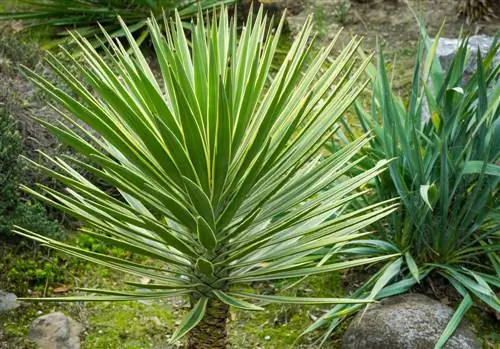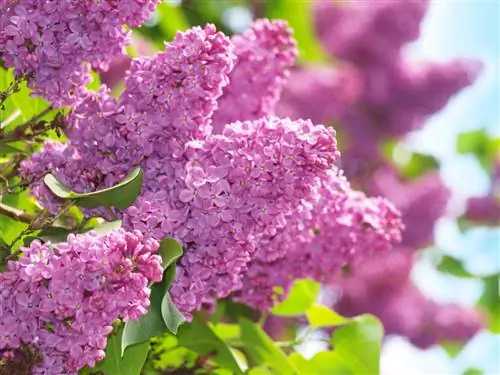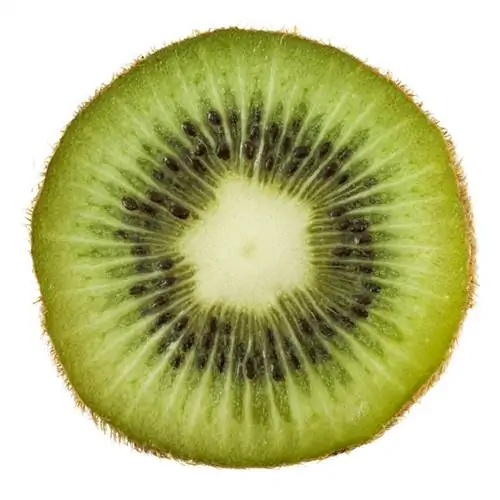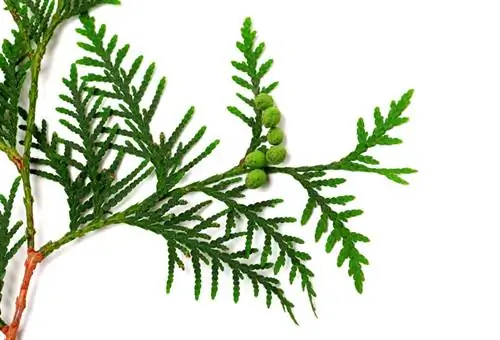- Author admin [email protected].
- Public 2023-12-16 16:46.
- Last modified 2025-01-23 11:22.
To the untrained eye, there are many similarities between agave and yucca. Both are drought-loving desert plants whose leaves grow in a rosette. Despite all the similarities, the two species differ in many ways.
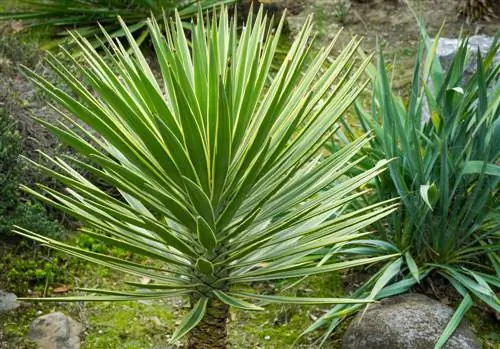
What are the differences between agave and yucca plants?
Agave and yucca are both desert plants that grow in a rosette shape and belong to the subfamily Agavoideae. Agaves have fleshier leaves with spines on the edges, while yuccas have narrower, sword-shaped leaves. Agaves only bloom once in a lifetime, while yuccas bloom every year. Yuccas grow more tall than agaves.
How are agave and yucca similar?
Agaves and palm lilies - as yuccas are also called - are often similarly colored. Its rosette-like leaves protrude from a central stem. Both plants prefer warm, dry climates and are native to Mexico and the southwestern United States. Agave and yucca even belong to the same subfamily, the asparagus family (Agavoideae).
How to distinguish between agave and yucca by their leaves?
One of the most noticeable differences between agave and yucca is the shape of the leaves. Although the leaves of the agave are less fleshy than those of other succulents, the leaves of the yucca are rather long and narrow in comparison. Yucca leaves are often compared to the shape of swords.
Agave leaves also differ from yucca leaves in the spines that run along the edges of the leaves. These spines, also known as marginal teeth, line the edges of the leaf and end in a pointed terminal spine at the tip of the leaf.
What are the differences in terms of flowering?
One of the most important differences between yucca and agave is the frequency of flowering. Yucca reliably blooms once a year, usually between mid-summer and early fall. The different varieties differ slightly in the exact timing of their flowering.
Agaves, on the other hand, only bloom once in their life. Depending on the species and growing conditions, an agave flowers between the 10th and 30th year. After an agave flowers, it dies shortly afterwards. The flowering habits of the agave have earned it the nickname “plant of the century”.
Are there also differences in size and growth?
Agave plants grow in both height and diameter. They are stemless plants that always grow at the base and close to the ground. The largest agaves can reach a height of up to one meter and an equal diameter.
Yucca plants, on the other hand, tend to grow more in height than in width. As the plant grows in height, it continues to produce leaves of approximately the same length. Over time, the yucca forms a trunk similar to that of a small tree.
Do agaves and yuccas differ in terms of care?
Agaves and yuccas do not differ in terms of their care and their preferred location. Both prefer a sunny location and well-drained, loose soil. The only difference is overwintering: While you can leave some types of palm lilies (e.g. Yucca filamentosa) in the garden both summer and winter, agaves cannot tolerate frost and therefore have to overwinter in a frost-free room.
Tip
Not all palm lilies are suitable for the garden
As with agaves, there are many different types of palm lilies. Not all of them are suitable for the garden. The giant palm lily or yucca (Yucca elephantipes), for example, does not tolerate frost and is therefore only suitable as a houseplant.

